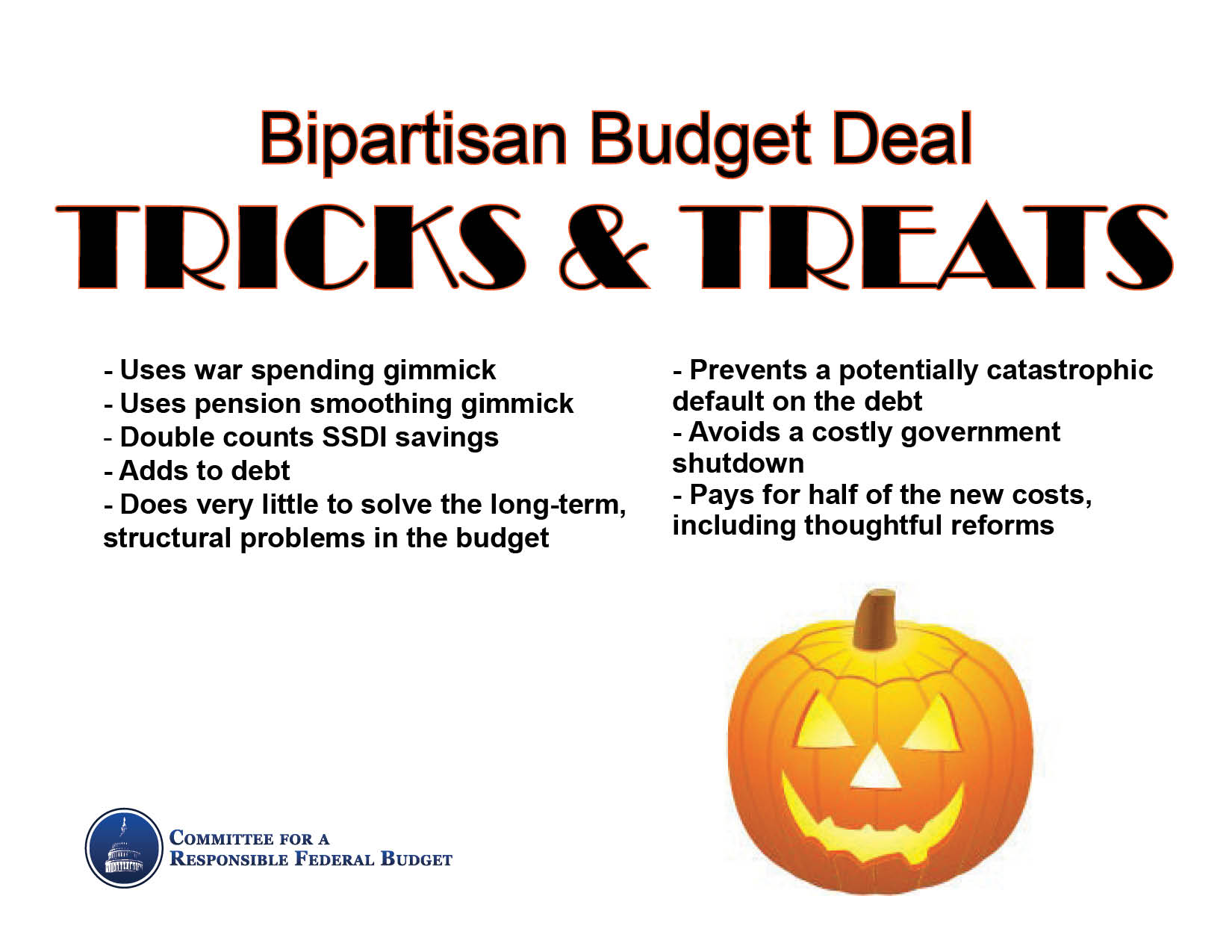The Tricks and Treats in the Budget Deal
With the Senate passing the Bipartisan Budget Act of 2015 in the wee hours of the morning the bill now heads to the President's desk for signature. For Halloween we are weighing in on the tricks and the treats in this bill.

Tricks
War spending gimmick: The level of Overseas Contingency Operations (OCO) funding set in the bill exceeds the President’s budget request by about $31 billion for Fiscal Years 2016 and 2017. This OCO spending is not subject to the discretionary spending caps and is not offset in this bill. Even scarier is that the non-defense OCO spending in the bill could be a brand new gimmick to backfill non-defense discretionary spending in an eventual omnibus.
Pension smoothing gimmick: This provision temporarily reduces the amount that companies must contribute to their pensions, which increases profits and therefore taxes. However, pension contributions are increased later to make up the difference (which decreases tax revenue), so the net effect is close to zero. The provision is a timing gimmick that only appears to raise revenue because not all of the revenue losses appear outside the budget window.
Double counting SSDI savings: The agreement includes about $4 billion of Social Security savings, a modest but positive step for the program’s finances. However, these savings, which ultimately go toward keeping the trust funds solvent, are also counted to offset the sequester relief. The money can only be counted once.
Adds to debt: The BBA of 2015 is only about 65 percent offset and adds $56 billion to the debt over 10 years after interest costs are included. If you exclude the gimmicks used to pay for the bill then number is $76 billion and only half the bill’s cost is truly paid for. Read more in our blog “Budget Deal Truly Offsets Only Half Its Cost”
Does very little to solve the long-term, structural problems in the budget: This deal gets the government functioning for two years, but does not address our long-term budget problems: rising entitlement costs and not enough revenue to pay for them. Policymakers must come together on tax and entitlement reform to prevent the rapid rise in debt projected at the end of the decade.
Treats
Prevents a potentially catastrophic default on the debt: This bill avoids breaching the debt limit which would lead to a complete economic disaster. The debt limit will be suspended through March 15, 2017. After that the limit will reset to the debt at the time. Read about options to reform the debt limit in our paper “Better Budget Process Initiative: Improving the Debt Limit.”
Avoids a costly government shutdown: The government runs out of funding on December 11th, and this bill resolves a partisan standoff over funding levels. Congress will still have to negotiate an Omnibus appropriations bill to avoid a government shutdown. The increased caps should help smooth the negotiations though there is still concern over policy riders possibly leading to partisan standoff.
Pays for half of the new costs, including thoughtful reforms: The bill includes a number of smart policy changes – including reductions in Medicare spending, improvements to tax compliance, and several modest reforms to the Social Security Disability Program. Although these changes only pay for half the bill and close 1.5% of Social Security’s 75-year gap, they largely represent good policy.
****
Happy Halloween from the Committee for a Responsible Federal Budget!

